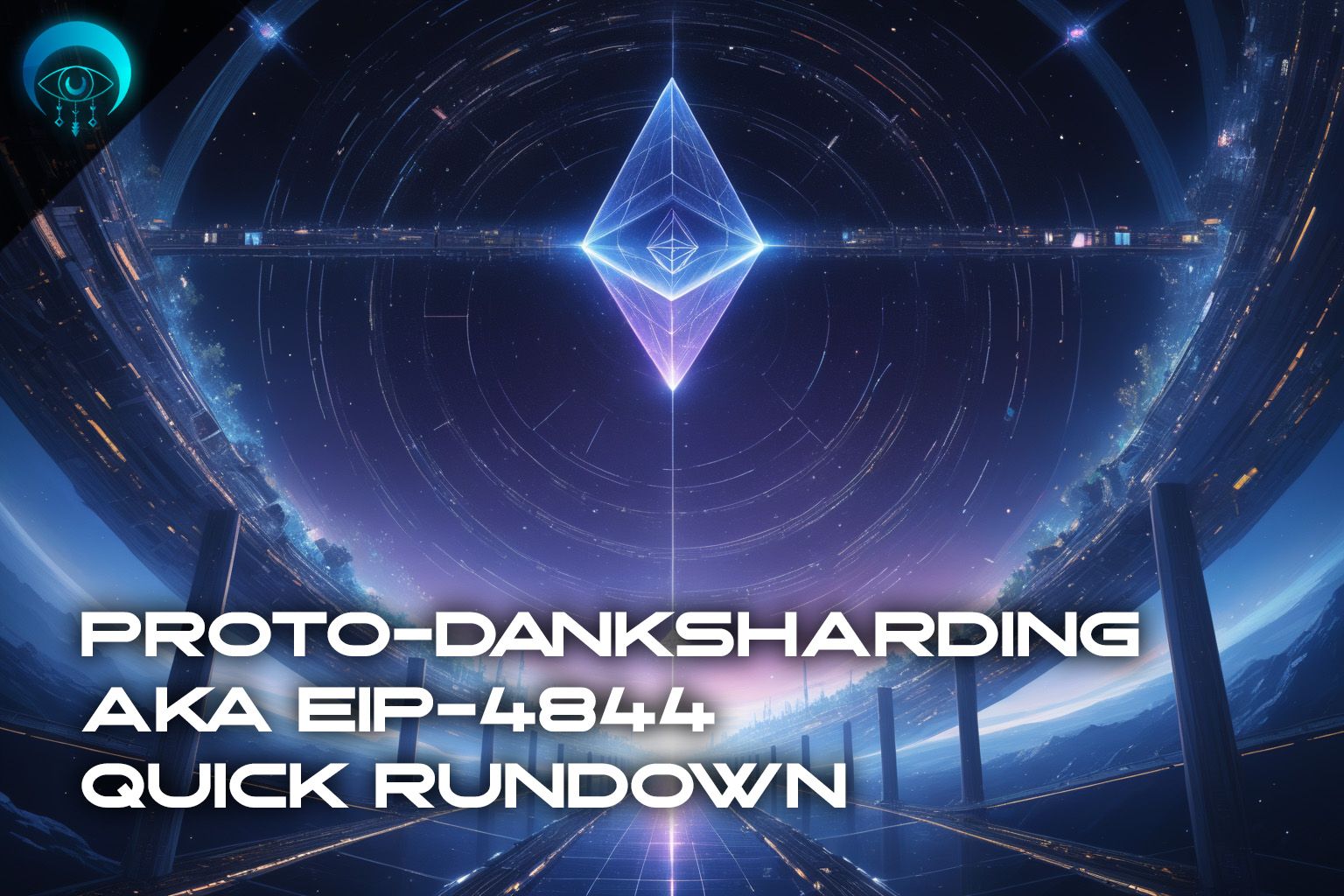Proto-Danksharding aka EIP-4844 Quick Rundown

Ethereum is taking a big step forward with its scalability plan, moving away from the complex idea of sharding to something called Proto-Danksharding. This shift is key for making Ethereum more efficient, especially for technologies built on top of it like rollups. The main game changer is a new way of handling transaction data, which will be cheaper and temporary, rather than expensive and permanent.
This could initially affect Ethereum's price a bit, but in the long run, it's a smart move. It's expected to make Ethereum a better platform for developers and could lead to a lot more cool and efficient apps in the Web3 space.
Like many Layer 1 blockchains, Ethereum has faced the well-known "blockchain trilemma" dealing with a bottleneck effect that impedes scalability.
Sharding (splitting the chain in multiple mini-chains) was once considered a potential solution, but was ultimately set aside due to its complexities and security concerns. In its place, the concept of Danksharding was introduced, but its full implementation will take years.
As an interim solution, Proto-Danksharding, or EIP-4844, is slated for implementation within the next six months most probably. This step is pivotal in Ethereum's strategy for scalability, simplifying the processes for Layer 2 solutions such as rollups. In fact, Ethereum is said to now have a rollup centric roadmap.

The Problem
Rollups using Ethereum (L1) for security have to provide data availability to prove that the transactions they process aren't invalid / fraudulent. This is done through periodic transactions to L1 containing a bunch of data I won't detail here. Currently, rollups use the CALLDATA field of Ethereum transactions to send compressed data to Layer 1. This data is stored permanently, leading to unnecessarily high costs (like 99% of current costs...).

The Solution
Rather than storing rollup data indefinitely, it will be stored temporarily on Ethereum. This ensures data availability for nodes to verify transactions while avoiding the expense of permanent storage.
How?
Through a new type of transaction designed specifically for rollups, called blob transactions. A new transaction format with additional fields allows for rollups to send periodic data to L1 without using the expensive CALLDATA field, but instead, a storage space called "blob" (if you're in cloud computing, you probably know that buzzword already...).
This change is particularly beneficial for optimistic rollups because they rely on a fraud proof mechanism and thus absolutely need to provide data availability for verifiers to do their job.
Without going too much into details to avoid confusing you, the blob data can't be read by the EVM which means it won't burden it, and will be pruned after roughly 18 days. Blob data is stored within consensus nodes, not inside blocks, which implies a completely different fee market.

Regular transactions using block space (permanent storage) will still be subjected to "normal" gas price, while blob transactions, using blob space (temporary) will have its own gas price. This basically means that sending transactions to L1 will be significantly cheaper, at least in the beginning, as the gas price for blob carrying transaction will be much cheaper.

What are the consequences for investors?
"Cool, but aside from being some mumbo jumbo for tech nerds, why should I care? Is my bag gonna pamp or nah?"
Short term, it's potentially bearish for ETH's price because the gas currently burned by rollups is going to get annihilated, thus probably making Ethereum slightly inflationary again.
However, this is long term bullish because it significantly improves Ethereum's scaling capacity, and reinforces the infrastructure on which Web3 is supposed to be built. Rollup costs are going to get ridiculously low.
Burning ETH because transaction fees are very high (especially in periods of intense activity) is not the kind of reasons we want, even if degens are willing to pay for it, as the early adopters they are.
Instead, we'd rather have ETH burnt thanks to the volume of users Ethereum attracts because devs can finally leverage a truly scalable infrastructure to build cool dapps. In other words, Ethereum becomes more efficient and will have no more excuses.
Degens will likely use blob space for retarded NFT PFP projects, despite the fact that the data is pruned after 18 days.
Oh well. Apes will be apes. This is NFA btw.

